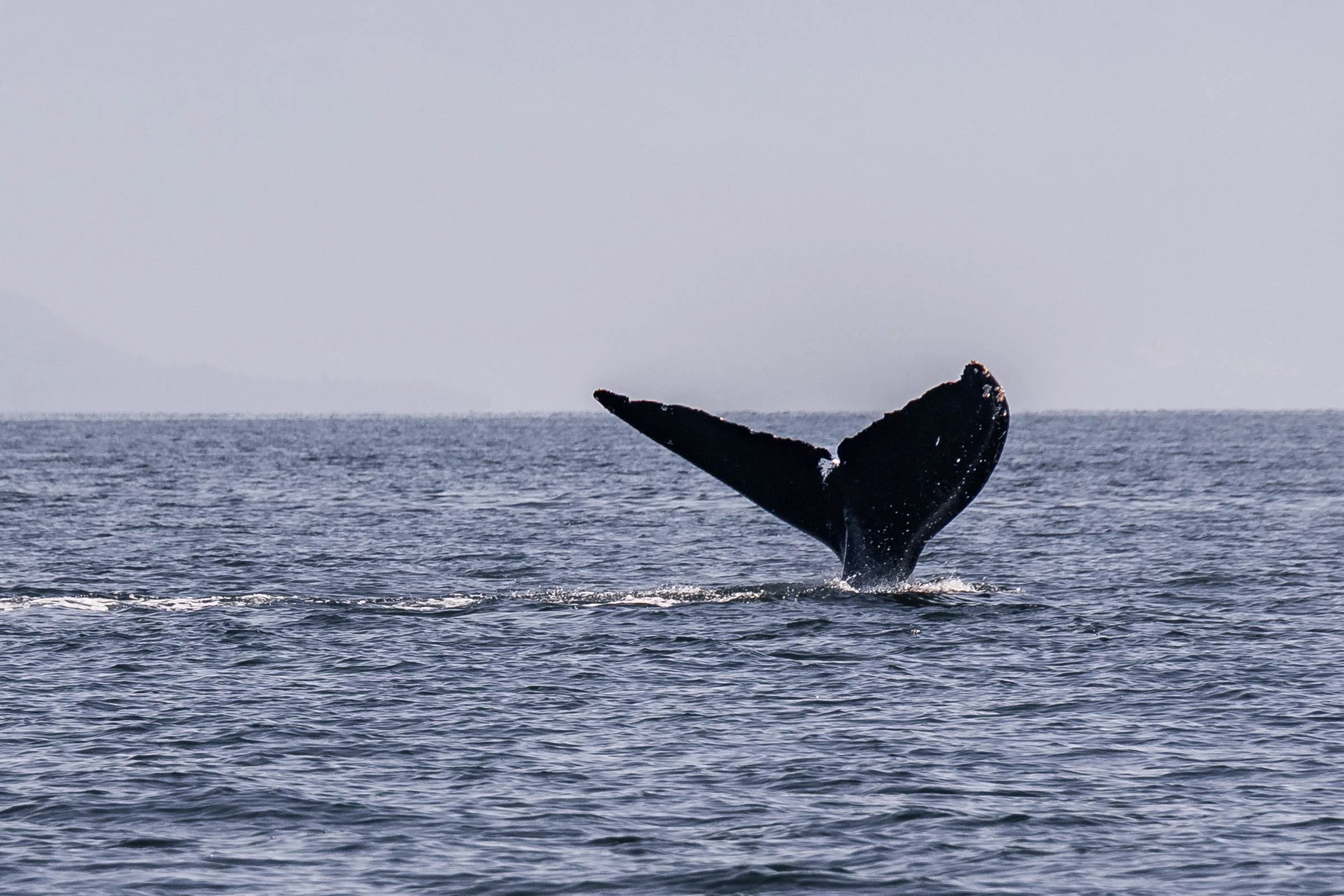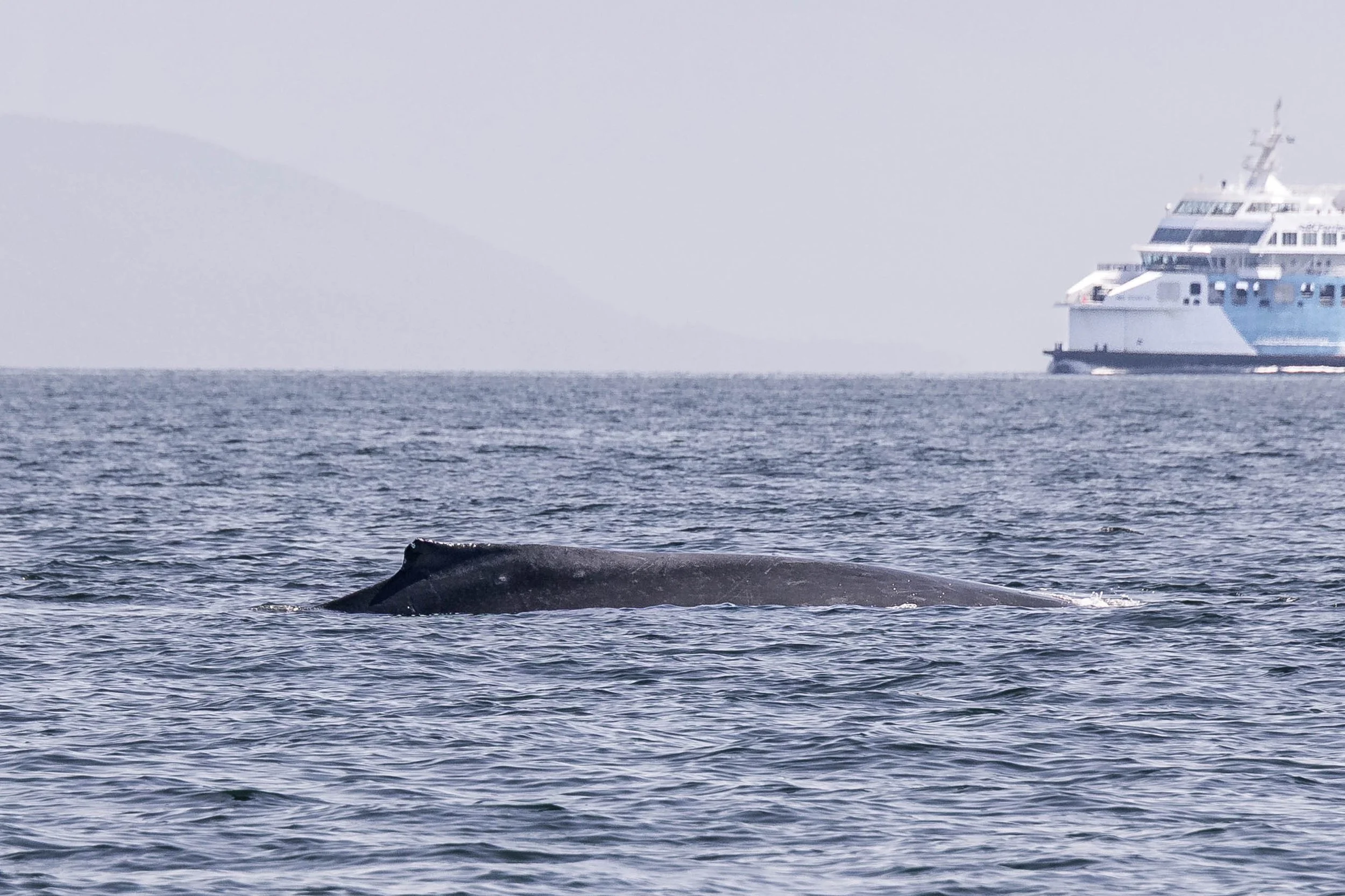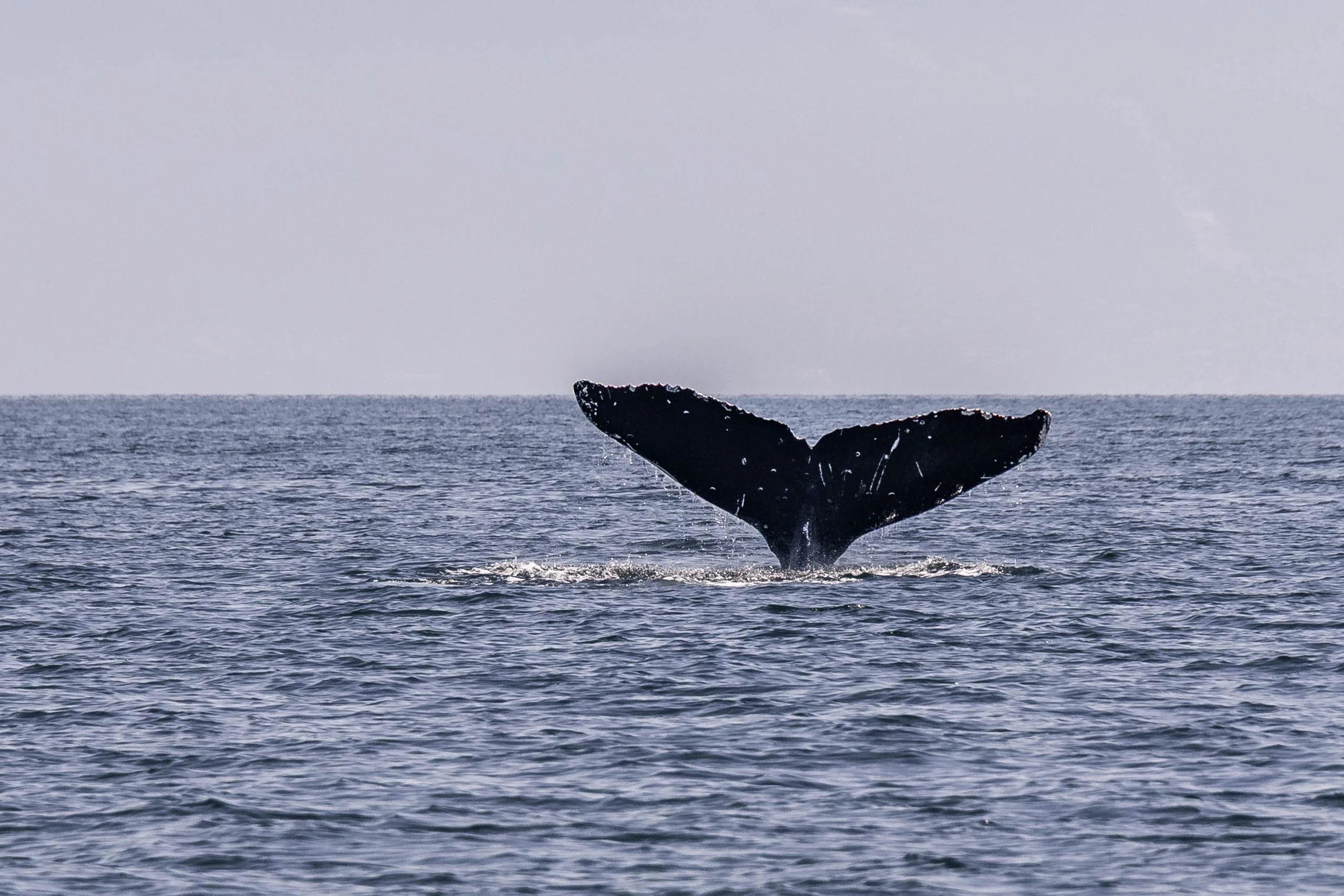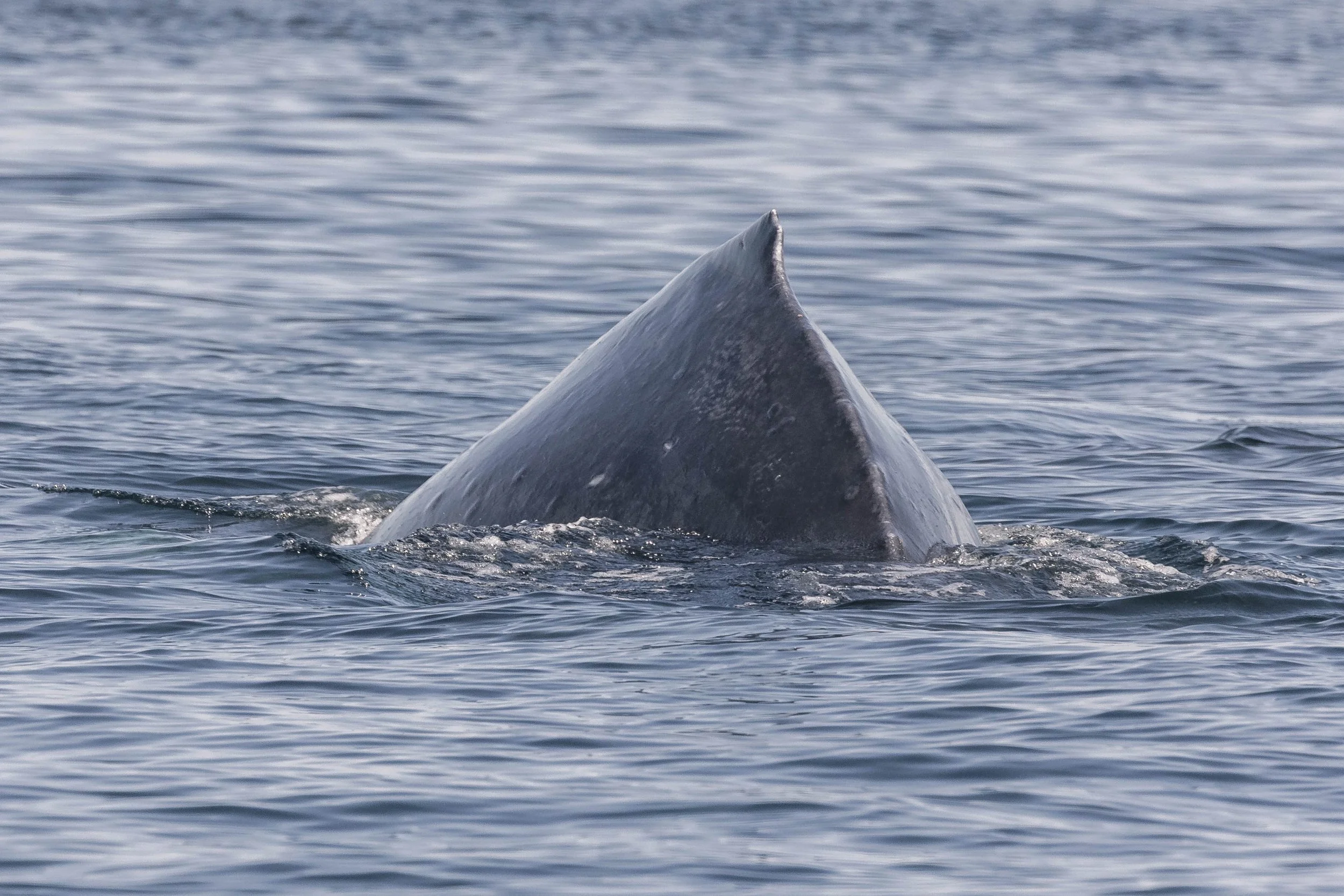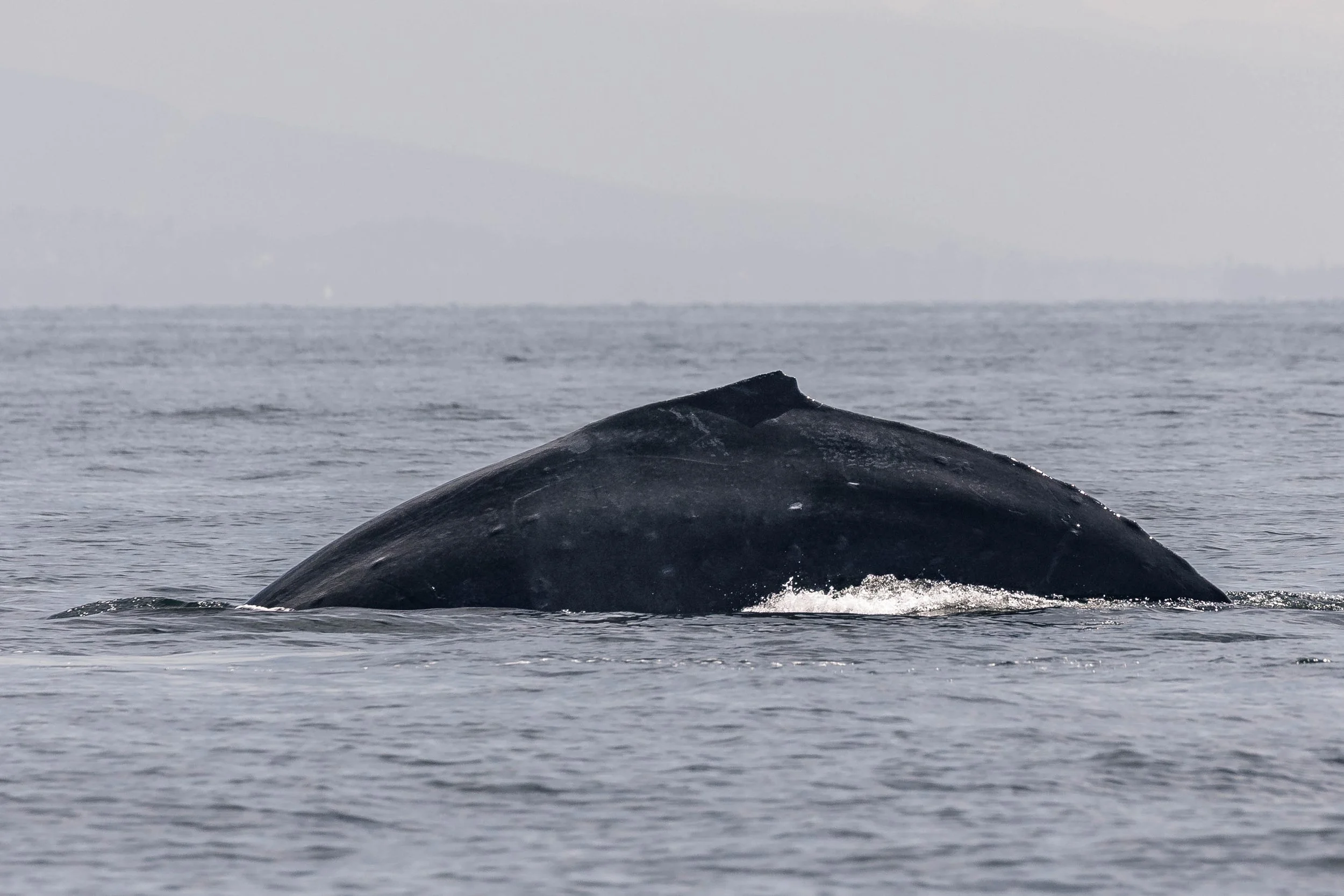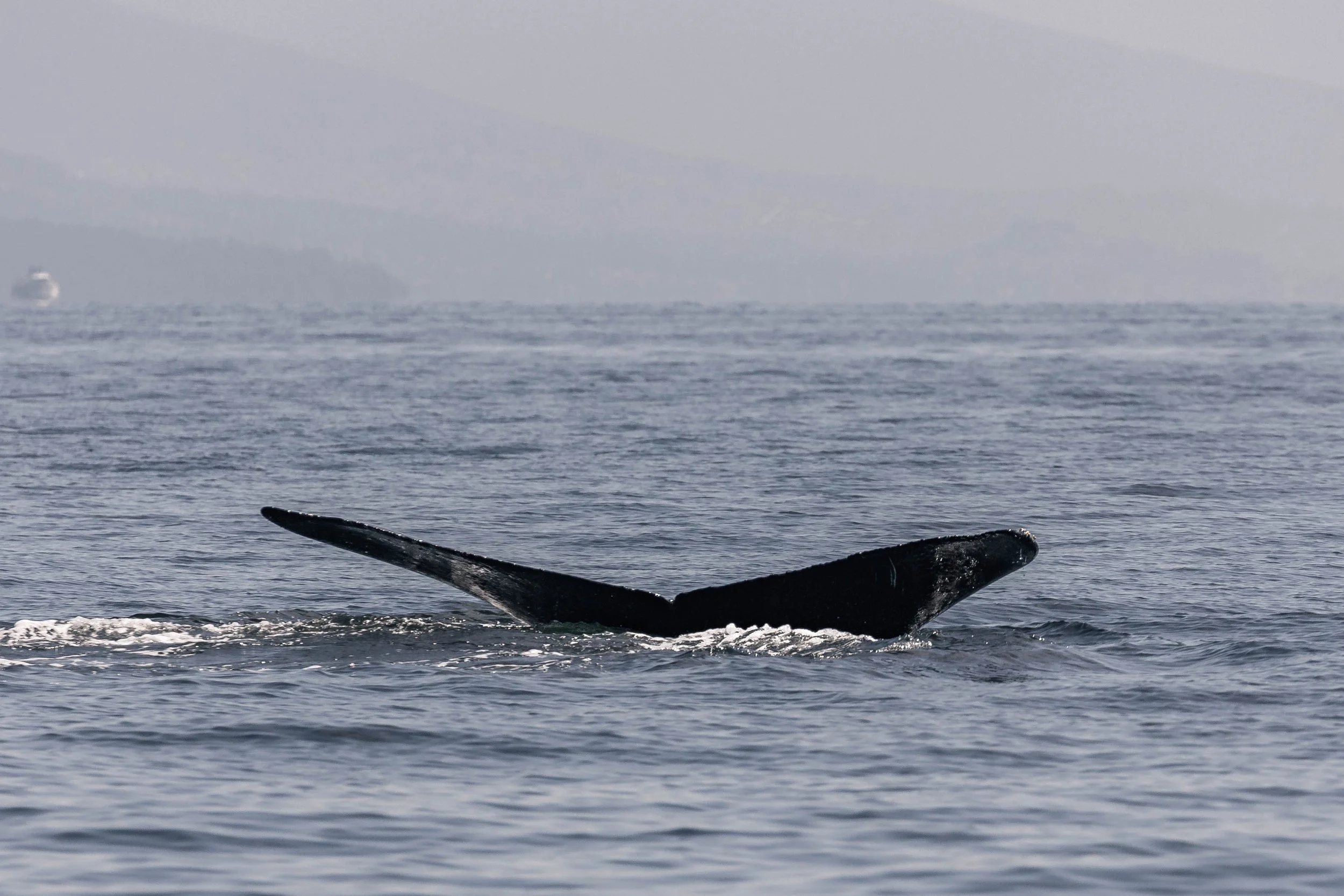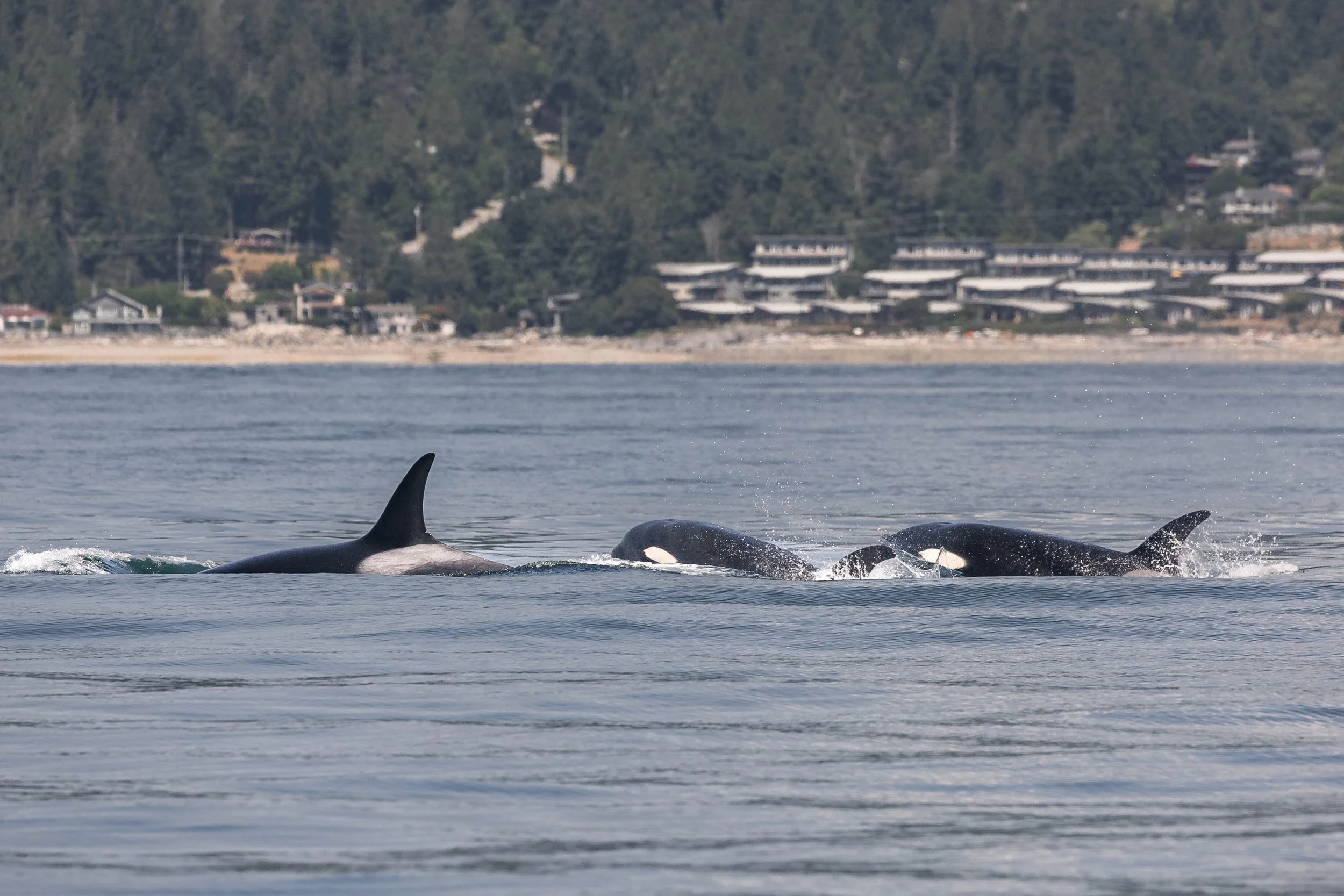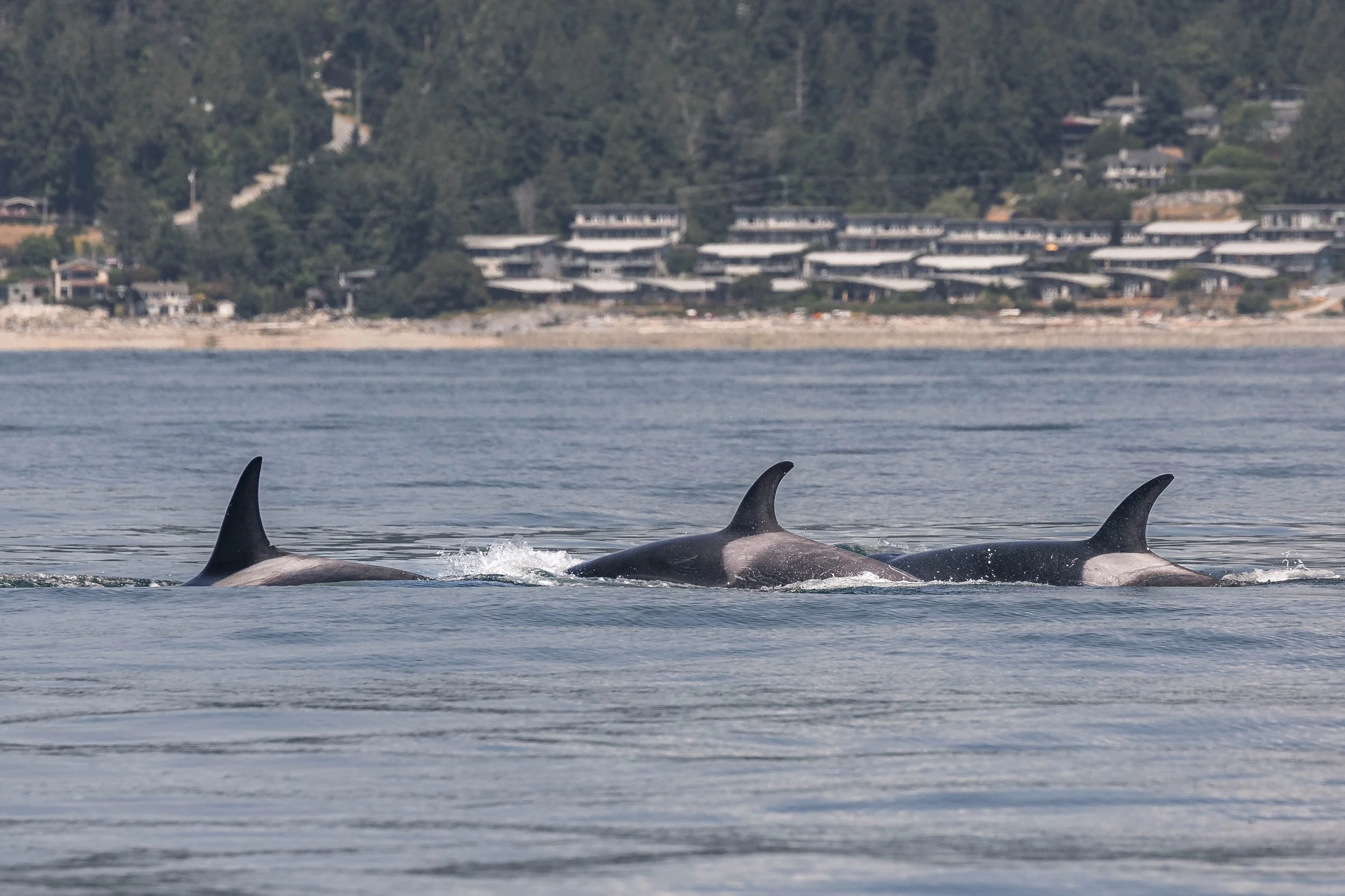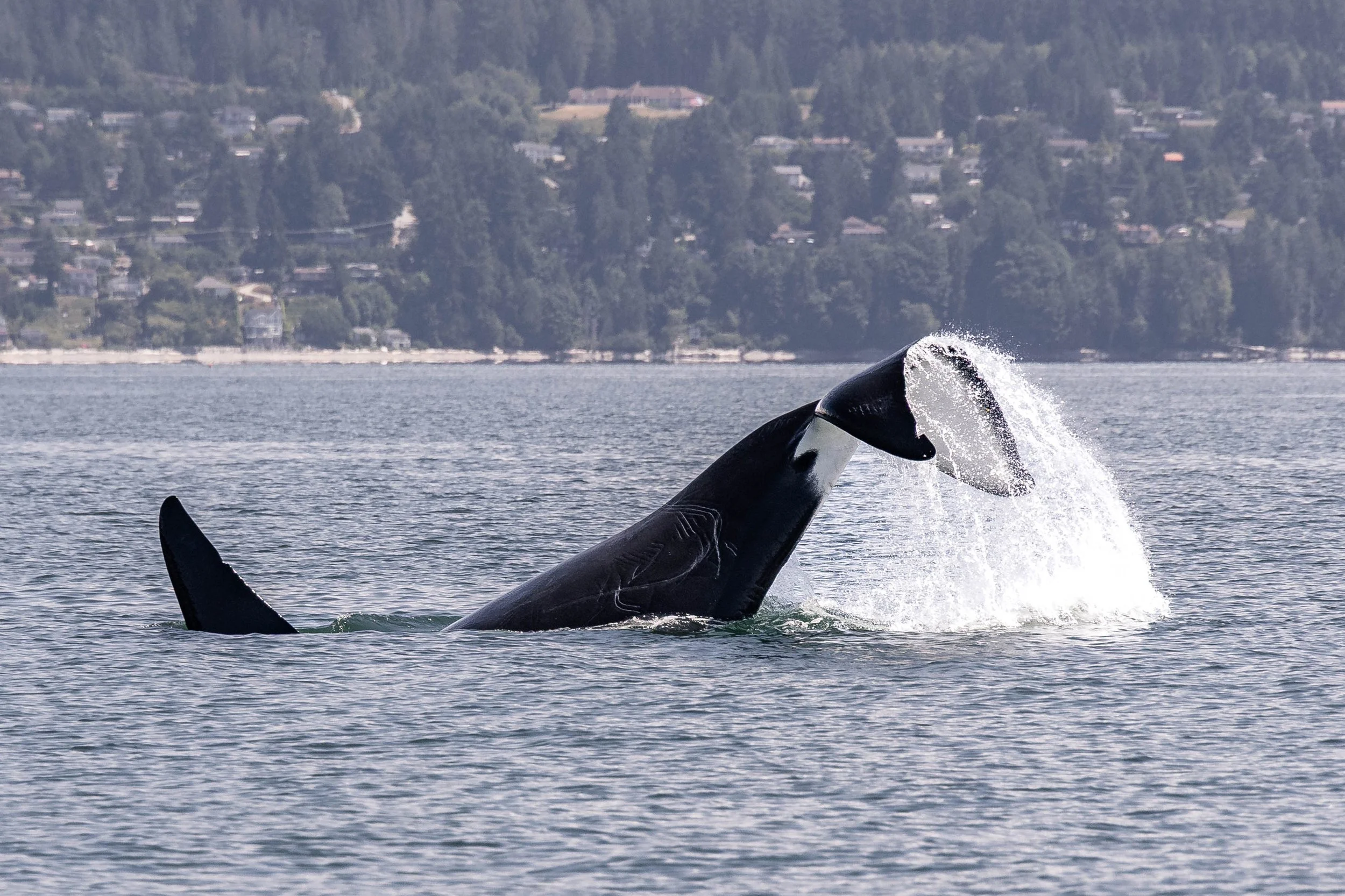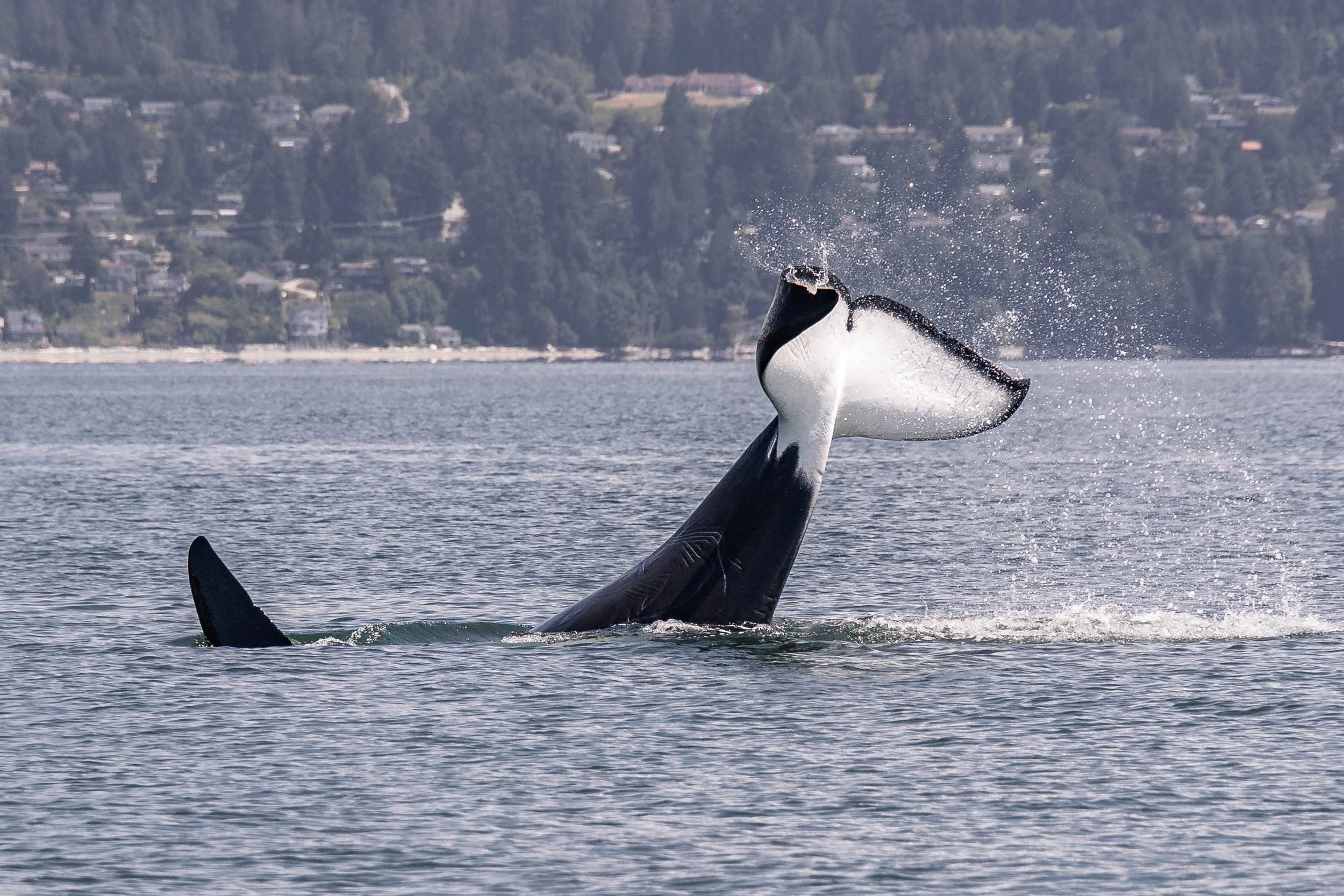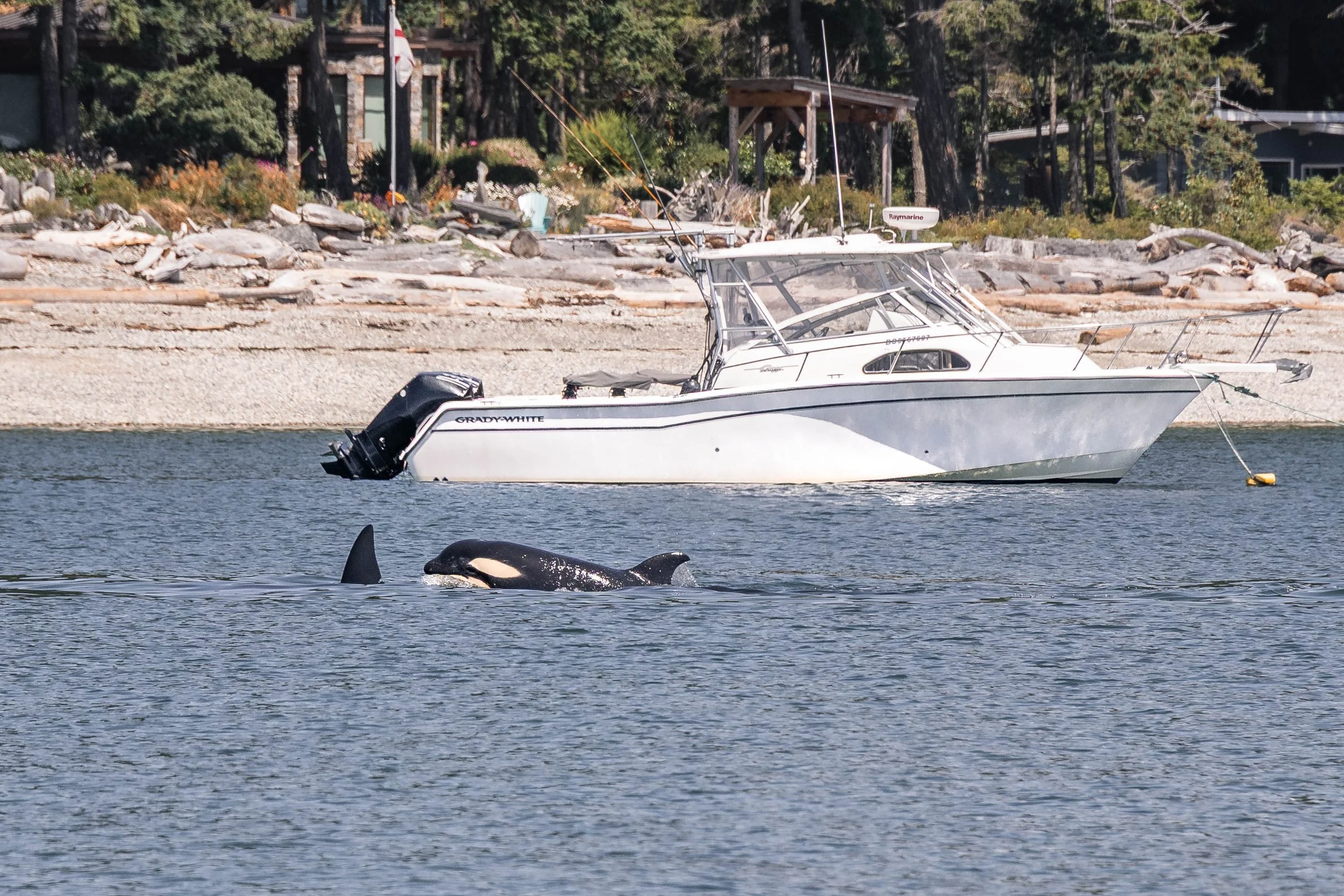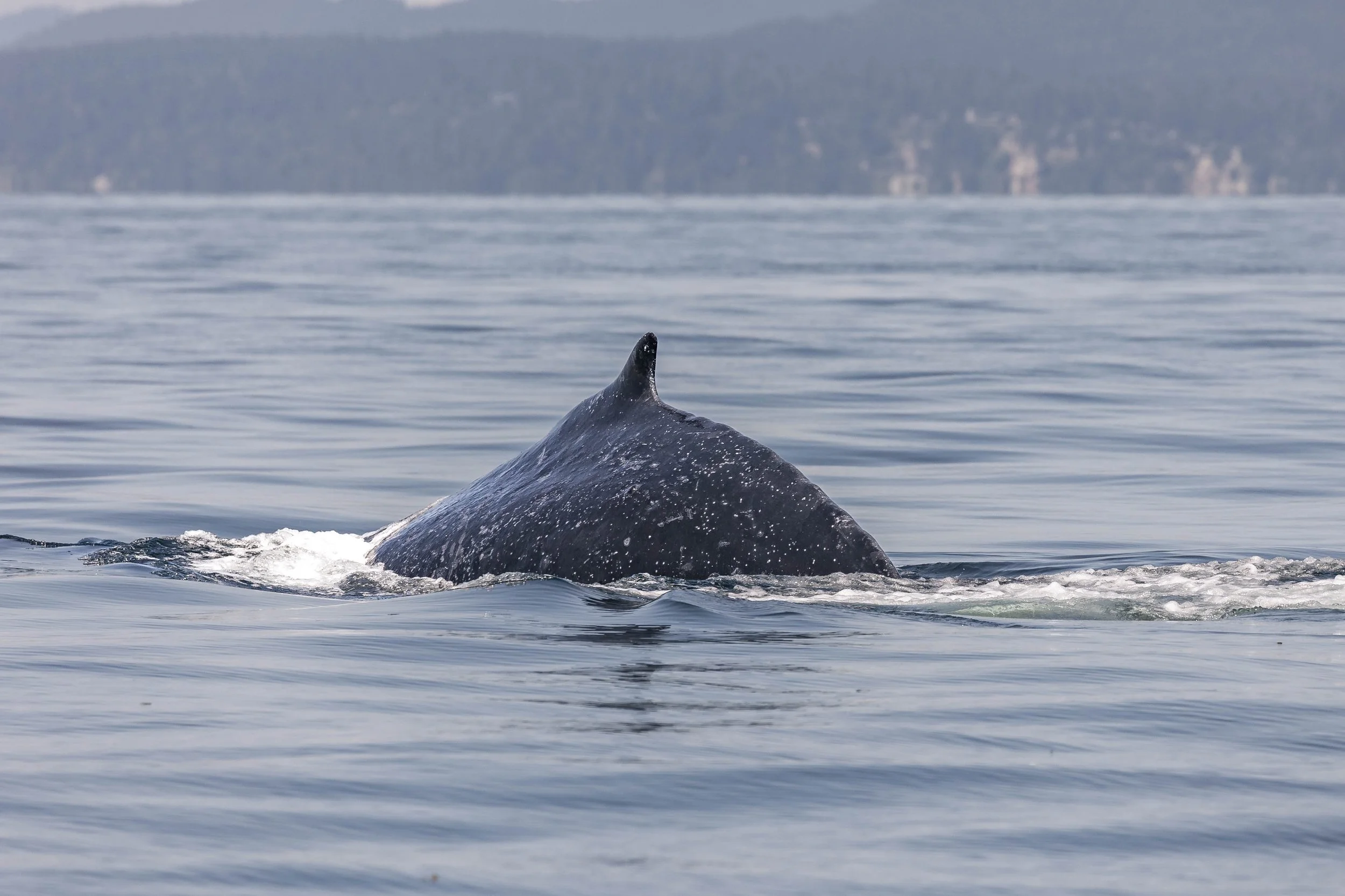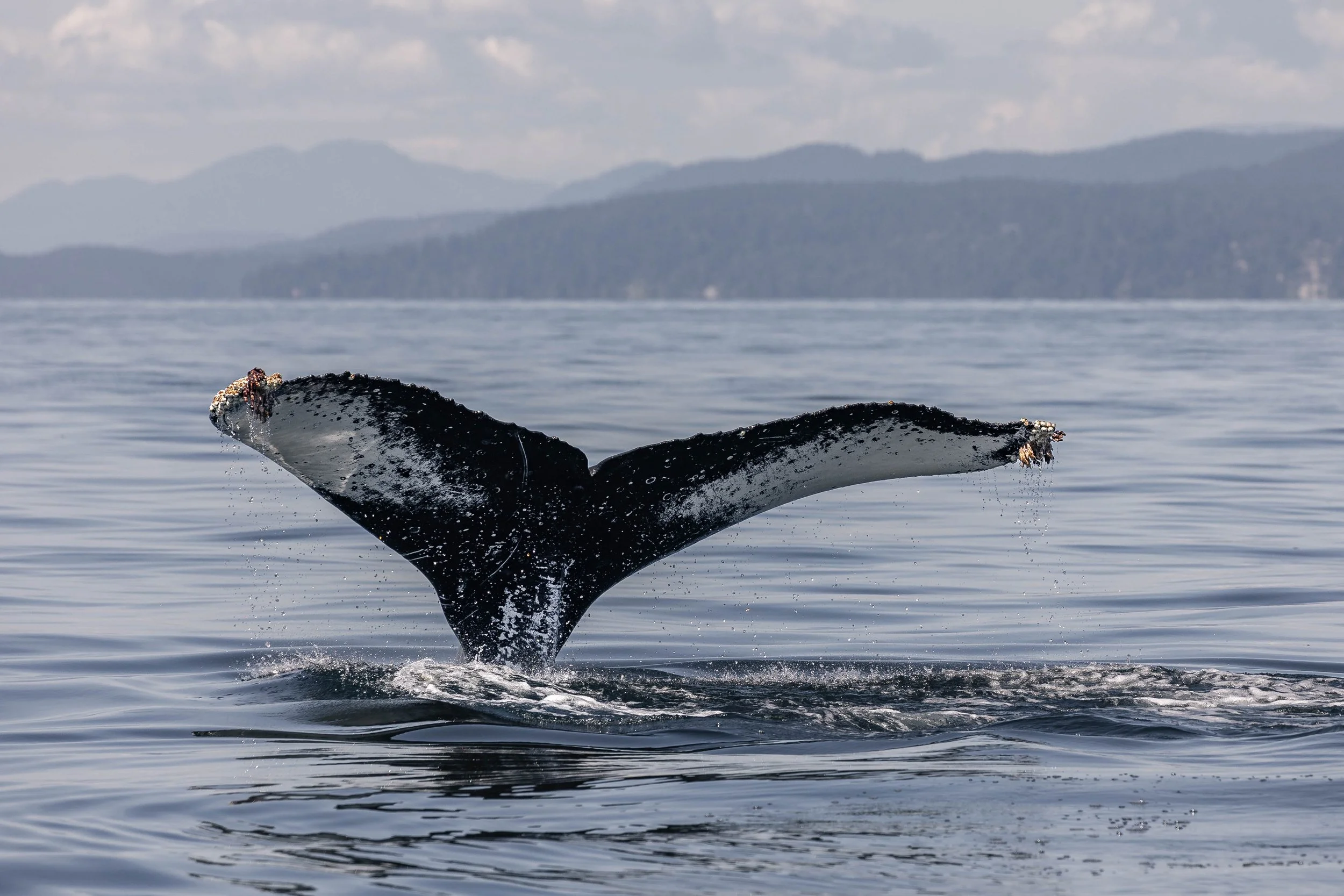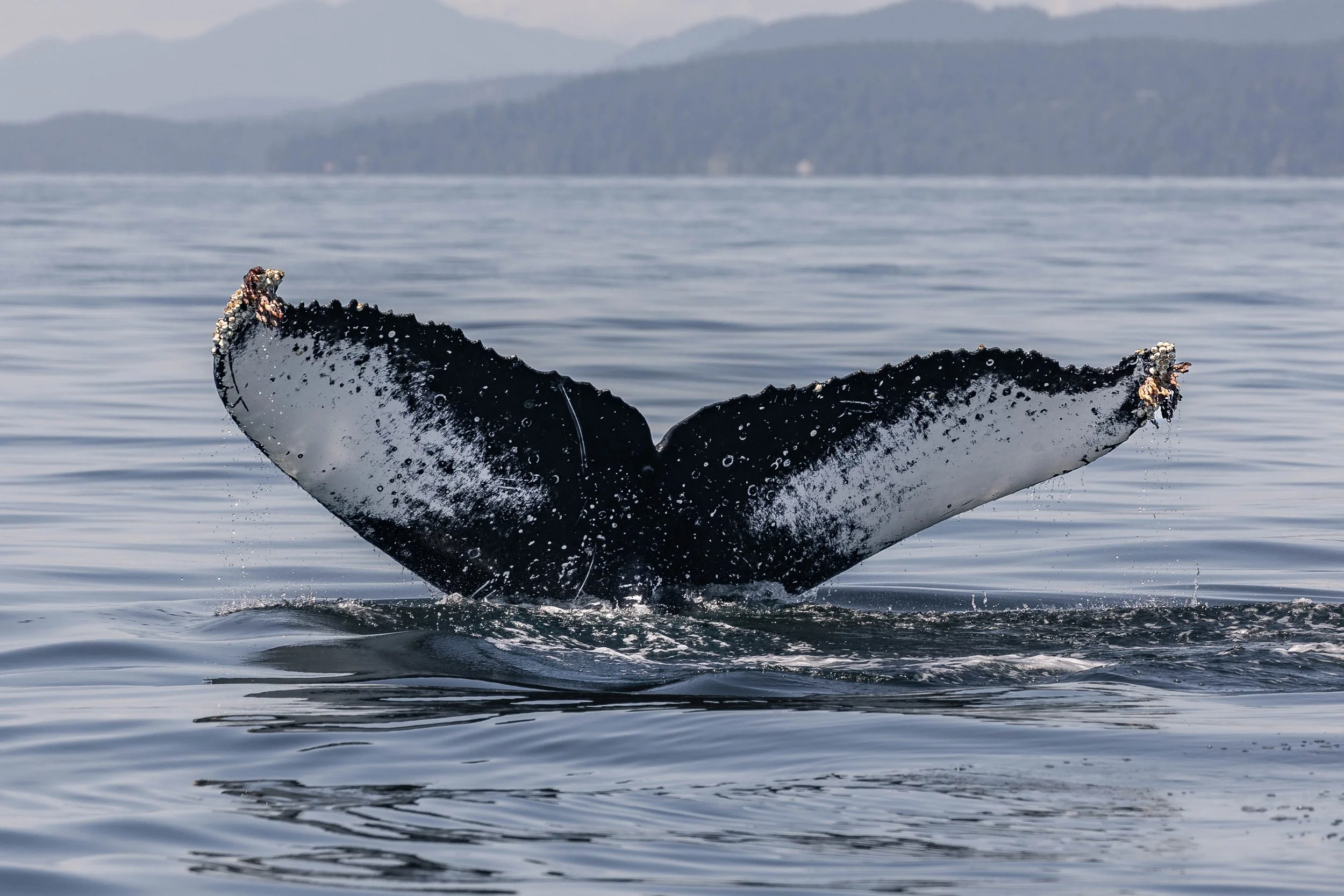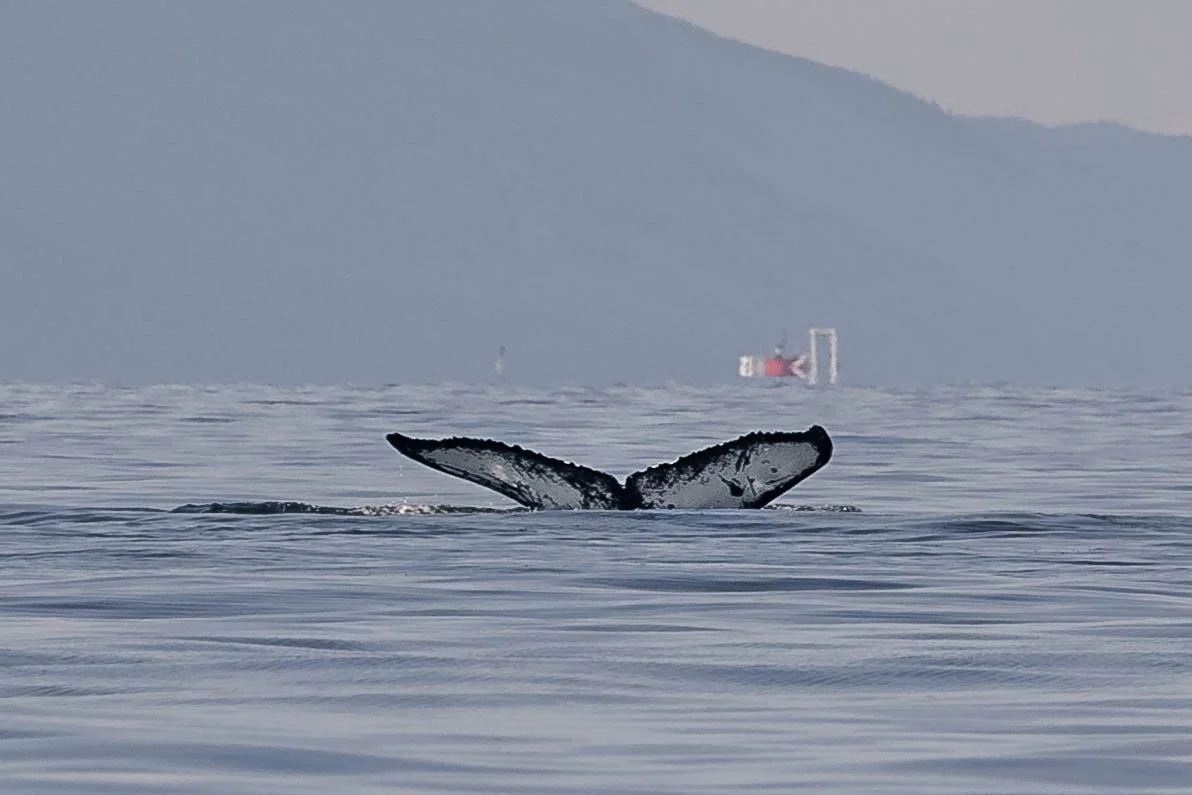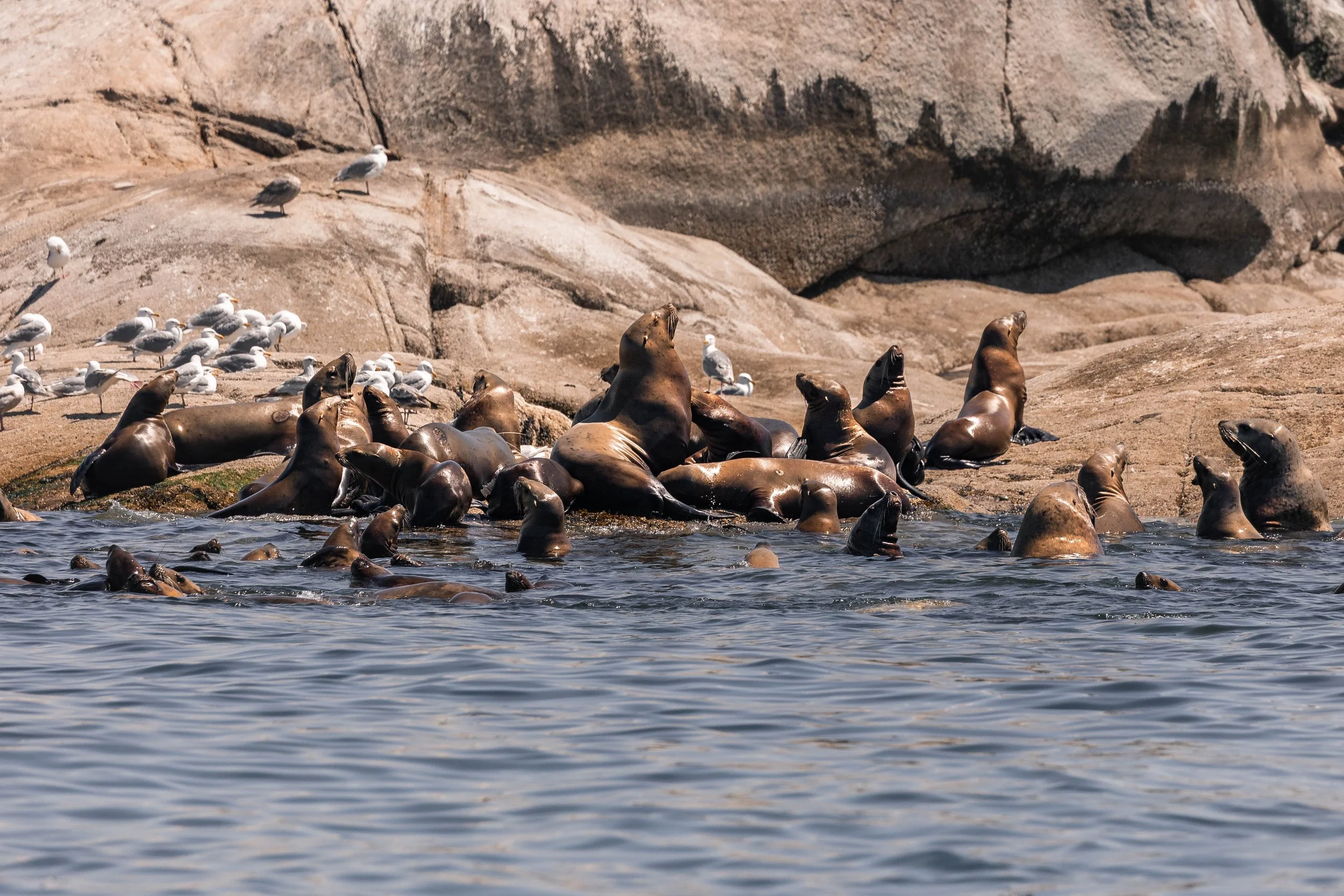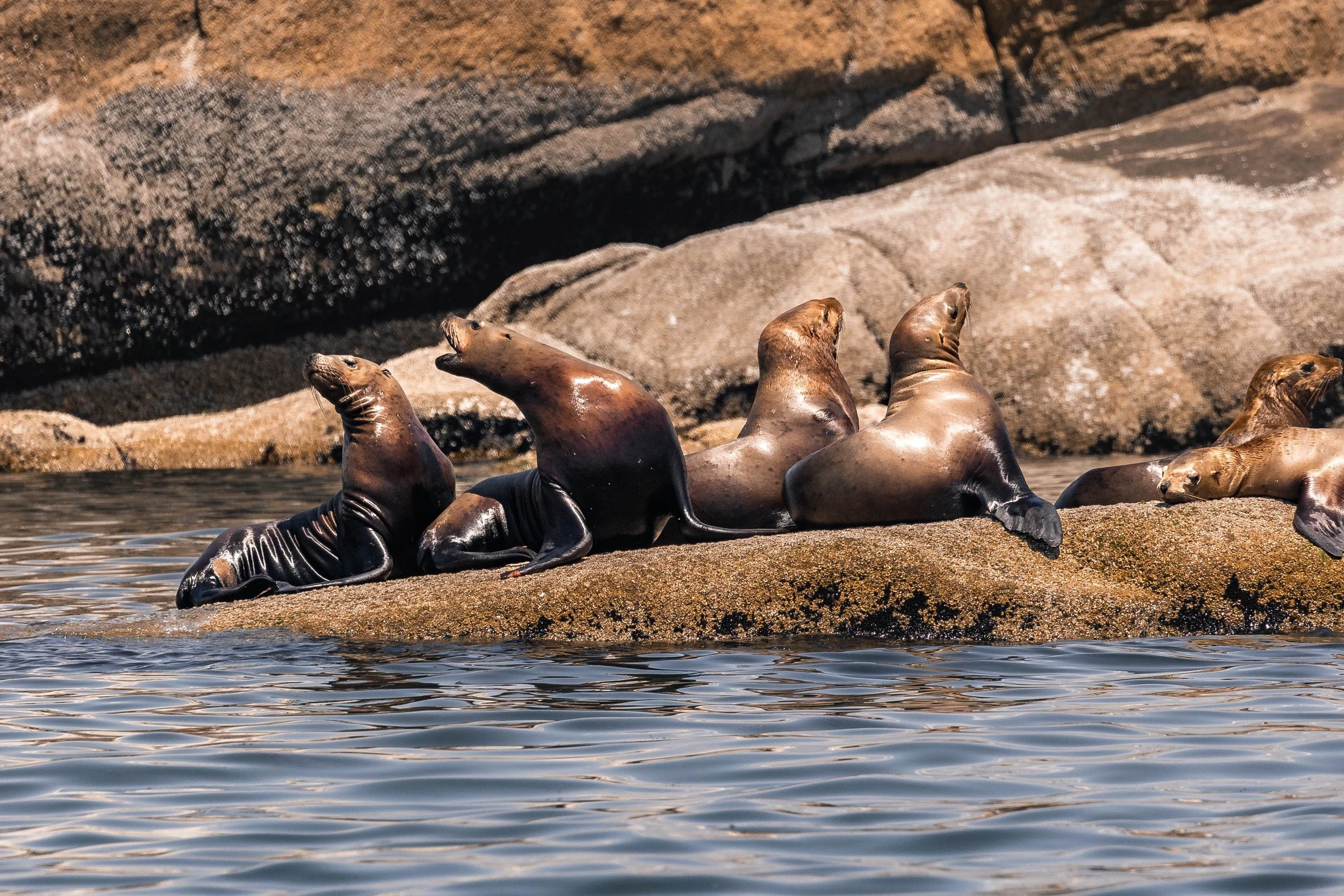July 6, 2025, 10:30 AM - Journey across the Strait for Humpbacks and Orca!
The sun was shining overhead as we had two of our boats leaving Nanaimo. We headed towards the Strait of Georgia, which was a whale hotspot lately, hoping that the trend would continue today. And boy did it! We travelled east, and both of our boats ended up spotting blows from different groups of humpbacks at nearly the same time. One of the groups of whales was a trio consisting of Niagara (BCY0057), Smoke/Squirrel (BCX2183), and Chandelle (BCX2140); the other was a pair of whales, Graphite (BCX2077) and an unknown friend who didn’t want to fluke.
Both of these groups of whales were up to the same thing: travelling through the area and getting a snack while they did so. The waters off Vancouver Island are very important for humpback whales since it is the main feeding grounds for the vast majority of the animals that we see, although there are a few humpbacks that might just be passing through on their way elsewhere. When we see our whales travelling, it’s just to find areas around here that might have more food for them, not necessarily different breeding grounds. Interestingly, the humpback whales are thought to be able to smell where a good feeding area is since their main food source (krill) emits a chemical that the whales can detect. Once they smell a good spot, they go into feeding mode, sensing the vibrations of their prey with their tubercles to scoop them up with their mouth. Once they find a good spot, usually they’re not the only ones, so you might see them come together like these groups did, and there are often multiple groups in the same general area taking advantage of that food hotspot!
While we were watching our humpbacks, we got word that another vessel had spotted a pod of orca on the other side of the Strait, so we left the whales to their food and we continued towards the Sunshine Coast. Over here is where we caught up with those orcas, which turned out to be 3 different pods travelling together, although they were split up into groups. Those three pods were the T036s, T065Bs, and the T123s!
T036 Flapjack ♀ (≤1970)
T036B Tattertip ♀ (1998)
T036B1 Bhotia ♀ (2009)
T036B1A Maple ♀ (2025)
T036B2 Greenfelder ♀ (2013)
T036B4 Auk ♂ (2024)
T065B Chunk ♀ (1993)
T065B1 Birdsall ♂ (2011)
T065B2 Nettle ♂ (2019)
T065B3 Rook ♂ (2023)
T123 Sidney ♀ (~1985)
T123A Stanley ♂ (2000)
T123C Lucky ♀ (2012)
T123D Darcy ♀ (2018)
It seemed like some of the females of these pods were spending time together, while the males were off on their own. Interestingly, this was over a pretty great distince, with our first boat on scene not seeing any of the males since they were on the other side of an island from where they were spending time with the females!
Although they wouldn’t be in close contact, orca are very smart and they likely made a plan to meet back up on the other side. Even if this plan went arry, they can communicate across pretty far distances, especially in calmer conditions like this, so they would have been able to talk to each other and regroup if needed.
We enjoyed the time spent with the orca, who seemed to be acting social. This is quite common to see in groups like this, since it’s the entire point of the gathering. Since orca travel in martriarchal pods most of the time, they end up spending a lot of time with the same whales, all of whom theyre related to. This can leave the orca with less socialization than they like if they aren’t to meet up with other pods, and it also means there are no breeding opportunities. T-parties like these ones give those opportunities, as well as the much-needed socialization. Given that orcas have a much more developed social section of their brain than even humans do, you can imagine how important the extra meetings are for the animals!
After spending time with the orca, we made a quick stop at the White Islets to see the Sea Lions and other wildlife before heading back across the Strait towards Nanaimo. On the way, our open boat had one final humpback whale encounter, with another trio of whales spending time together. This time it was a group of younger whales: Crevasse (BCX2054), Kelpie (BCY1276), and Chi (BCZ0575). These whales were feeding in the area and seemed to be working together. We often see whales that are travelling together like this, even though it used to be much less common back when the company first started. When whales are associating like this, you can see their behaviours start to synchronize, just like they did today. They surfaced together, breathed together, and when they dove, they lifted their tails basically in unison. It was quite the sight to behold!
Leaving them behind and returning to Nanaimo was tough, but all good tours must come to an end! And what a good tour it was, getting to see both species of whale as well as all the other wildlife. Throughout the tour, the onboard Marine Naturalists Hayleigh Hilbert and Jordan Robinson captured some amazing photos, all of which are available below!
Niagara’s fluke. Photo by Hayleigh Hilbert.
Chandelle’s dorsal fin. Photo by Hayleigh Hilbert.
Chandelle’s fluke. Photo by Hayleigh Hilbert.
Graphite swishing his tail. Photo by Jordan Robinson.
Graphite’s fluke. Photo by Jordan Robinson.
Graphite’s unknown friend. Photo by Jordan Robinson.
Graphite’s Unknown friend’s dorsal fin. Photo by Jordan Robinson.
Graphite’s fluke. Photo by Jordan Robinson.
T065B Chunk, T065B3 Rook, and T065B2 Nettle. Photo by Jordan Robinson.
T065B Chunk, T065B3 Rook, and T065B2 Nettle. Photo by Jordan Robinson.
T123A Stanley. Photo by Hayleigh Hilbert.
T065B1 Birdsall with his mother T065B Chunk hiding behind his dorsal fin. Photo by Hayleigh Hilbert.
Stanley lifting his tail. Photo by Hayleigh Hilbert.
T123A Stanley tail slapping. Photo by Hayleigh Hilbert.
T036 Flapjack. Photo by Hayleigh Hilbert.
T123D Darcy. Photo by Hayleigh Hilbert.
T036B1 Bhotia. Photo by Hayleigh Hilbert.
T036B1 Bhotia and T036B4 Auk. Photo by Hayleigh Hilbert.
T123A Stanley. Photo by Hayleigh Hilbert.
Kelpie’s dorsal fin. Photo by Jordan Robinson.
Crevasse’s dorsal fin. Photo by Jordan Robinson.
Kelpie preparing to dive. Photo by Jordan Robinson.
Kelpie’s fluke. Photo by Jordan Robinson.
Crevasse’s fluke. Photo by Jordan Robinson.
Chi preparing for a dive. Photo by Jordan Robinson.
Chi’s fluke. Photo by Jordan Robinson.
Steller Sea Lions spending time on the rocks. Photo by Jordan Robinson.
You can’t spend time with a colony of Sea Lions without seeing a fight! Photo by Jordan Robinson.
A flock of cormorants squawking on the cliffs. Photo by Jordan Robinson.
A pair of eaglets just outside of their nest - can you spot both of them? Photo by Hayleigh Hilbert.

